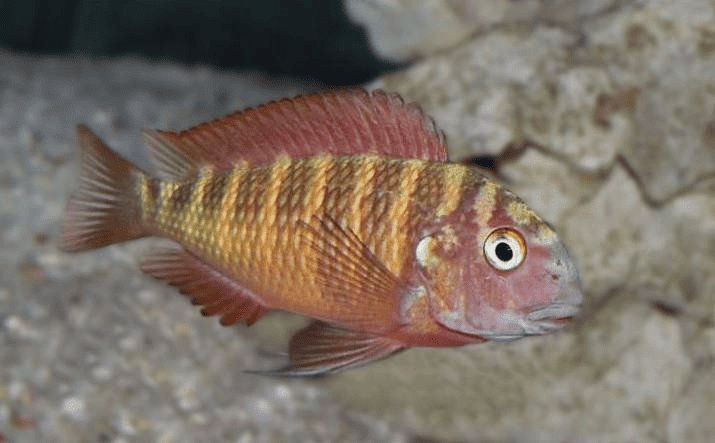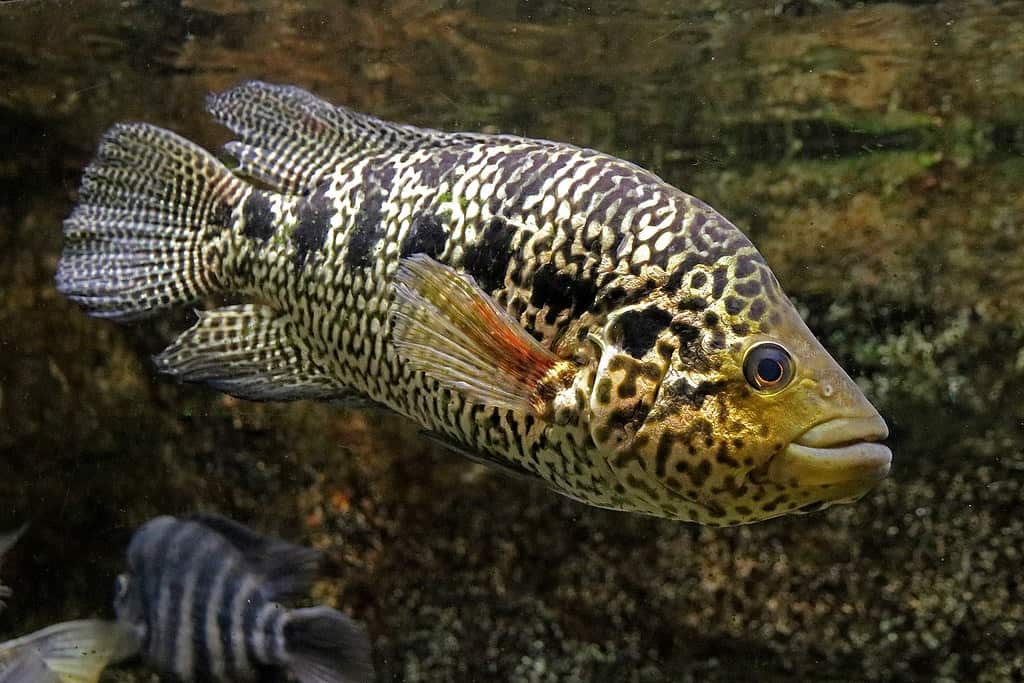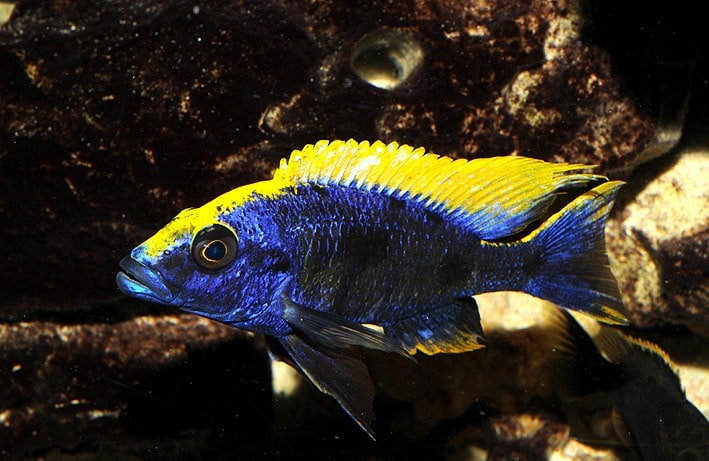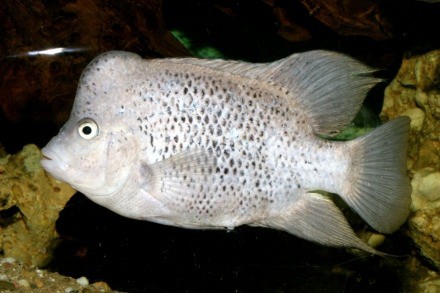Dive into the mesmerizing world of aquariums and discover the hidden gems of the aquatic kingdom — the rarest cichlids in the world. These captivating creatures, with their vibrant colors and unique patterns, are a sight to behold. From the depths of Lake Tanganyika to the lush rivers of Northern Madagascar, these elusive cichlids have captured the hearts of passionate fish enthusiasts and collectors alike.
In this article, we will take you on a journey to uncover the seven rarest cichlids that exist on our vast planet. Prepare to be amazed as we delve into the intriguing stories behind these remarkable species in the wild. So, grab your snorkels and get ready to dive deep into the fascinating world of rare cichlids!
7. Tropheus moorii
Conservation Status: Least Concern
Genus: Tropheus
Location: Lake Tanganyika, Africa

Tropheus moorii is a rare species of cichlid fish native to Lake Tanganyika in Africa. As part of the genus Tropheus, this medium-sized cichlid boasts a unique and colorful appearance, with distinct patterns that vary among different populations in the lake. While Tropheus moorii is considered rare, its conservation status is currently classified as “Least Concern,” indicating that its population is relatively stable and not facing immediate threats of extinction.
In their natural habitat, Tropheus moorii prefers rocky shorelines and shallow waters along the rocky substrate of Lake Tanganyika. These cichlids are typically found in the littoral zones, where they graze on algae-covered rocks as their primary food source. Their herbivorous diet shapes their social behavior and territoriality within their habitat.
Did You Know?
Tropheus moorii is a highly territorial fish that forms colonies, and individual fish establish and defend their territories against others.
6. Tramitichromis trilineatus
Conservation Status: Least Concern
Genus: Tramitichromis
Location: Lake Malawi, Tanzania

Tramitichromis trilineatus is a rare and fascinating species of cichlid fish native to Lake Malawi in Tanzania. Belonging to the genus Tramitichromis, these cichlids boast distinctive features and behaviors that make them a captivating addition to the diverse ecosystem of Lake Malawi.
For aquarium enthusiasts, Tramitichromis trilineatus is a sought-after species. However, keeping them in captivity requires a well-maintained aquarium with appropriate space and conditions that mimic their natural habitat. Additionally, it is essential to provide suitable tankmates, as these cichlids may exhibit territorial behavior, especially during breeding and spawning periods.
Did You Know?
Tramitichromis trilineatus is relatively peaceful compared to some other cichlid species. They tend to form loose schools or small groups, contributing to their collective safety and allowing them to forage more effectively for their omnivorous diet.
5. Parachromis managuensis
Conservation Status: Least Concern
Genus: Parachromis
Location: Honduras and Costa Rica

Parachromis managuensis, commonly known as the Jaguar Cichlid, is a rare and remarkable species of cichlid fish found in Honduras and Costa Rica waters. Belonging to the genus Parachromis, these cichlids exhibit striking patterns and robust behaviors, making them a sought-after choice for some aquarium enthusiasts.
This kind of cichlid thrives in warm waters with plenty of hiding spots among submerged vegetation and rocky structures. They are known for their aggressive nature and territorial behavior, making them challenging to keep in captivity for all but the most experienced aquarium keepers.
Did You Know?
Parachromis managuensis has earned its name due to its striking resemblance to a jaguar’s coat patterns.
4. Otopharynx lithobates
Conservation Status: Least Concern
Genus: Otopharynx
Location: Lake Malawi, Tanzania

Otopharynx lithobates, a cichlid fish with a captivating appearance and intriguing behavior, is known for its rarity. It inhabits rocky shorelines and areas with sandy substrates in Tanzania. In their natural habitat, this fish feeds on a variety of food sources, primarily consisting of small aquatic invertebrates and algae.
Their diet influences their vibrant colors and patterns, which can vary among different populations and regions within Lake Malawi. They are known for their peaceful behavior compared to some other cichlid species, but territorial disputes can still occur, especially during breeding and spawning periods.
Did You Know?
These cichlids are mouthbrooders, with the females carrying and protecting the eggs and fry in their mouths until the fry are mature enough to fend for themselves.
3. Nandopsis ramsdeni (Joturo)
Conservation Status: Endangered
Genus: Nandopsis
Location: Cuba

Nandopsis ramsdeni (Joturo) is an exceptionally rare species of cichlid fish native to the island of Cuba. This captivating cichlid belongs to the genus Nandopsis, which encompasses various cichlid species found across the Americas. Due to its rarity, this kind of cichlid is not commonly kept in aquariums.
Sadly, the Nandopsis ramsdeni (Joturo) is facing an alarming conservation status, as it is classified as “Endangered” by conservation organizations. Its population is at significant risk of extinction due to various threats, including habitat destruction, pollution, and overfishing. The delicate freshwater environments of Cuba, such as rivers, streams, and lagoons, where Joturo cichlids reside, are under severe pressure, further endangering the survival of this rare species.
Did You Know?
During courtship, the male Nandopsis ramsdeni (Joturo) exhibits a stunning color transformation, becoming even more vibrant and intense.
2. Alcolapia alcalica
Conservation Status: Endangered
Genus: Alcolapia
Location: Lake Natron, Africa

Alcolapia alcalica is a very rare fish species because it is endangered. It belongs to the genus Alcolapia. Its habitat is located in Lake Natron, which is situated in Africa. As an endangered species, it faces significant threats to its survival, and conservation efforts are essential to protect and preserve this unique fish species.
The fish has developed several physiological and behavioral adaptations to cope with the challenging environment. One of its notable adaptations is the ability to tolerate high levels of alkalinity in the water. Alcolapia alcalica has specialized gills that help them regulate their internal pH and avoid the harmful effects of alkaline water. They have also developed specific behaviors to avoid areas with particularly harsh conditions and to seek out more favorable environments.
Did You Know?
Alcolapia alcalica plays a crucial role in the ecosystem by feeding on the abundant algae present in Lake Natron.
1. Ptychochromis insolitus
Conservation Status: Extinct in the Wild
Genus: Ptychochromis
Location: Northern Madagascar

The Ptychochromis insolitus, also known as Mangarahara cichlid, is the rarest cichlid as it is considered extinct in the wild. It is an extraordinary freshwater fish species that once inhabited the pristine rivers and streams of northern Madagascar. Its allure lies in its captivating colors and intriguing behavioral traits, which are typical of the cichlid family.
The extinction of the Mangarahara cichlid is attributed to a combination of human-induced threats. Deforestation and agricultural expansion have destroyed its natural habitat, fragmenting populations and reducing their available living spaces. Additionally, water pollution from various sources has compromised water quality, affecting the cichlid’s ability to thrive.
Did You Know?
The Ptychochromis insolitus’ plight serves as a poignant reminder of the challenges many freshwater fish species face worldwide.
